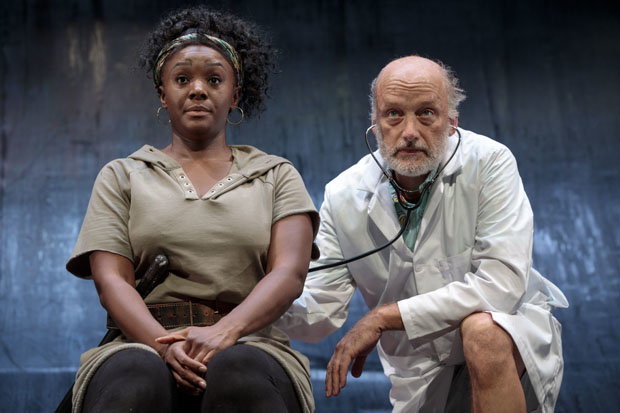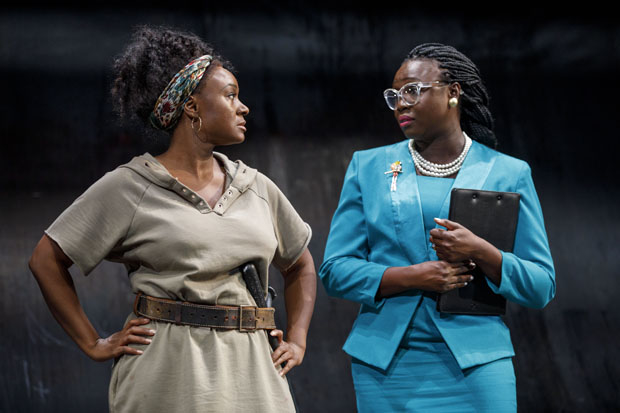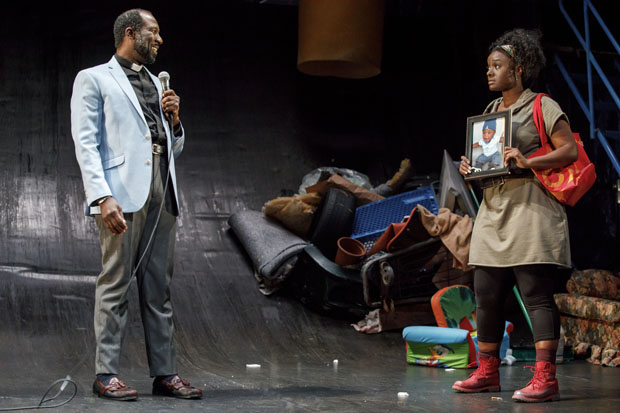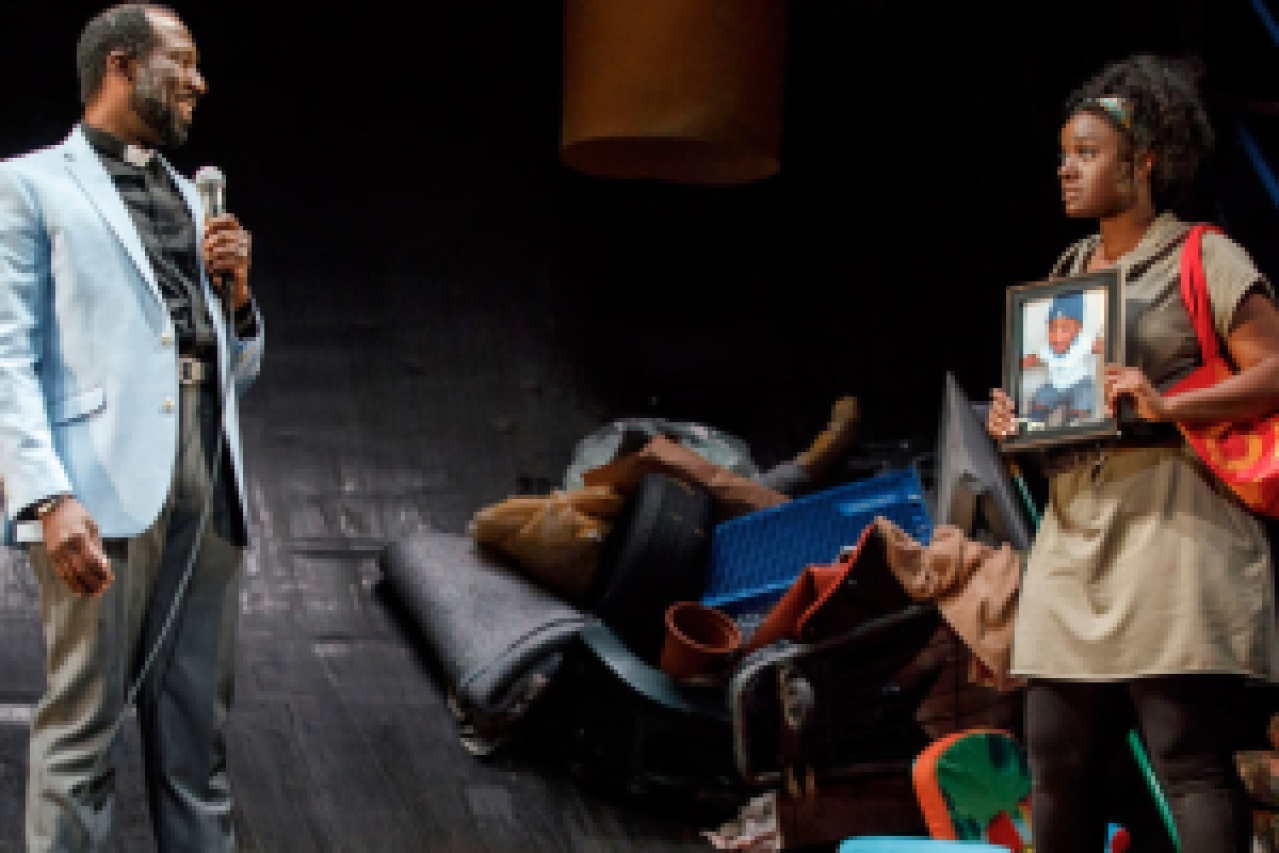In the Blood

(© Joan Marcus)
Poverty is a contagion. People go out of their way not to catch it, to physically avoid the afflicted. This is true in the world of Suzan-Lori Parks's In the Blood, but it is also true in our own heavily segregated cities. The program describes the setting as "here" and "now," and after sitting through this searing revival, you know it to be the case.
In the Blood is one of two plays Parks wrote based on Nathaniel Hawthorne's The Scarlet Letter. The other one, F**king A, is playing just across the lobby of the Pershing Square Signature Center. You really ought to see them both for the way they apply an old American story to our present condition.

(© Joan Marcus)
Like her namesake in Hawthorne's novel, Hester (Saycon Sengbloh) has a child out of wedlock. In fact, she has five, all from different fathers. A chorus of voices judge her for this at the top of the show, spitting comments like "who the hell she think she is" and "I'll be damned if she gonna live off me."
The Reverend (Russell G. Jones) thinks she should find the fathers and appeal to their better natures — even though he is reticent to admit that he is one of them. The Doctor (Frank Wood) thinks she should have her tubes tied. The Welfare Lady (Jocelyn Bioh) seems more interested in rubbing her own good fortune in Hester's face than helping her get ahead. Hester's Amiga Gringa (Ana Reeder) thinks she should sell some of her children to rich people, even though she knows they would not fetch as good a price as Amiga's white babies. Hester holds out hope that Chilli (Michael Braun), the father of her first child, will one day return and do the right thing. It seems unlikely, though, that a man who has spent the last 14 years shirking responsibility for his own kid will take care of four others who are not.
By reimagining Hester as a single black mother on welfare, Parks probes the limits of our tolerance as a society. We may be more forgiving of adultery than the Puritans in Hawthorne's story, but we've never really extended that tolerance to the children adultery produces, especially when we think they are living on our tax dollars.

(© Joan Marcus)
Parks's Brechtian proclivities mean that her astute social points are often underlined with a Sharpie. This is especially true during the confessional monologues delivered by each character. Some of the actors struggle to hold our attention in these moments as a drama becomes a lecture.
The performances are otherwise excellent under Sarah Benson's steady direction. Sengbloh approaches her character with a steely determination that immediately makes us root for her. Every other actor doubles as one of her children, with Braun's portrayal of her eldest, Jabber, particularly endearing in its adolescent vulnerability. Less endearing is Bioh's sour-faced Welfare Lady, who is as hilarious as she is maddening.
Costume designer Montana Levi Blanco outfits her with little plastic baggies tied around her pink pumps lest any of Hester's poor germs rub off. Her green suit and purse are perfectly color-coordinated, in sharp contrast to Hester's kids, whose soiled and mismatched clothes appear to be fourth- or fifth-hand. Louisa Thompson's ingenious set is a physical barrier to enforce this disparity. It's a severe slope (the kind found in a skate park) that the children spend much of the play sliding down (terrifically athletic movement by Elizabeth Streb). They run as fast as they can toward the slope, but never make it to the plateau (an apt metaphor for our false meritocracy). A bright yellow chute excretes refuse from above, out of which Hester and her children make their lives. They collect empty cans of soda for the recycling money and play with whatever molded plastic crap the kids from above no longer want.

(© Joan Marcus)
You may find In the Blood dystopian, but is it really so far off? You can consider this question as you stroll down 42nd Street after the show. Even on this tiny island of Manhattan, the gulf between the rich and the poor feels impossibly wide.











